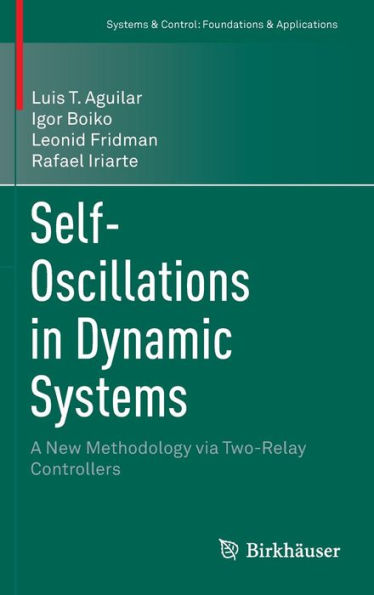The first part of the book explains the design procedures for two-relay control using three different methodologies – the describing-function method, Poincaré maps, and the locus-of-a perturbed-relay-system method – and concludes with stability analysis of designed periodic oscillations.
Two methods to ensure the robustness of two-relay control algorithms are explored in the second part, one based on the combination of the high-order sliding mode controller and backstepping, and the other on higher-order sliding-modes-based reconstruction of uncertainties and their compensation where Lyapunov-based stability analysis of tracking error is used. Finally, the third part illustrates applications of self-oscillation generation by a two-relay control with a Furuta pendulum, wheel pendulum, 3-DOF underactuated robot, 3-DOF laboratory helicopter, and fixed-phase electronic circuits.
Self-Oscillations in Dynamic Systems will appeal to engineers, researchers, and graduate students working on the tracking and self-generation of periodic motion of electromechanical systems, including non-minimum-phase systems. It will also be of interest to mathematicians working on analysis of periodic solutions.
The first part of the book explains the design procedures for two-relay control using three different methodologies – the describing-function method, Poincaré maps, and the locus-of-a perturbed-relay-system method – and concludes with stability analysis of designed periodic oscillations.
Two methods to ensure the robustness of two-relay control algorithms are explored in the second part, one based on the combination of the high-order sliding mode controller and backstepping, and the other on higher-order sliding-modes-based reconstruction of uncertainties and their compensation where Lyapunov-based stability analysis of tracking error is used. Finally, the third part illustrates applications of self-oscillation generation by a two-relay control with a Furuta pendulum, wheel pendulum, 3-DOF underactuated robot, 3-DOF laboratory helicopter, and fixed-phase electronic circuits.
Self-Oscillations in Dynamic Systems will appeal to engineers, researchers, and graduate students working on the tracking and self-generation of periodic motion of electromechanical systems, including non-minimum-phase systems. It will also be of interest to mathematicians working on analysis of periodic solutions.

Self-Oscillations in Dynamic Systems: A New Methodology via Two-Relay Controllers
158
Self-Oscillations in Dynamic Systems: A New Methodology via Two-Relay Controllers
158Hardcover(1st ed. 2015)

Product Details
| ISBN-13: | 9783319233024 |
|---|---|
| Publisher: | Springer International Publishing |
| Publication date: | 10/02/2015 |
| Series: | Systems & Control: Foundations & Applications |
| Edition description: | 1st ed. 2015 |
| Pages: | 158 |
| Product dimensions: | 6.10(w) x 9.25(h) x (d) |
